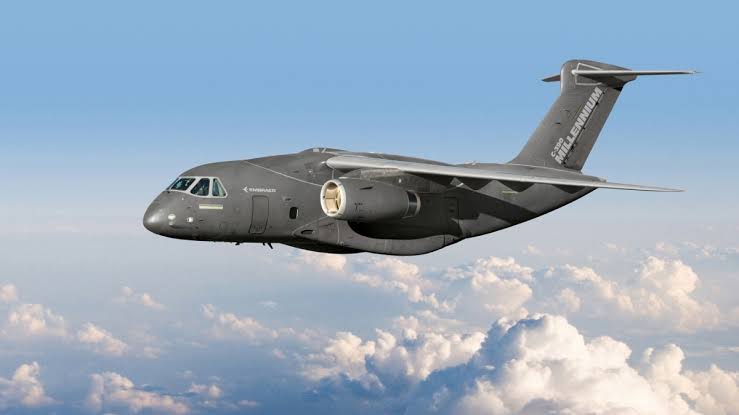Embraer C-390 for IAF as the Medium Transporter

IAF is replacing its HS748 Avros fleet of 56 aircrafts with C295 aircrafts. 40 of these light medium transporters are being made in India and 16 coming directly from Spain.
In addition 15 more aircrafts are going to be made in India bringing the total to 71.
IAF also needs to start replacing its AN32 fleet of light medium aircraft and logically they should be replaced by indiginzed version of C295, being the most suitable replacement. IAF presently operates 9 squadrons of these work horse ie 108 aircrafts.
Now IAF also needs to have around six to nine squadrons of a suitable multirole medium lift transporter with ability to airlift 25 tons of cargo, carry out aerial delivery etc.
However HAL and other agencies are still contemplating designing of an Indian Medium Transport Aircraft. This is likely to take a decade plus.
Thus Brazil and India are currently engaged in negotiations that could lead to a significant defence barter deal involving the HAL TEJAS MK-1A fighter jet and the Embraer C-390 Millennium military transport aircraft.
This potential arrangement reflects a growing strategic partnership between the two nations, aimed at enhancing their respective military capabilities while promoting domestic manufacturing.
Brazil is exploring the possibility of acquiring the TEJAS MK-1A as a replacement for its aging fleet of Northrop F-5 Tiger-II fighter jets. The Brazilian Air Force (FAB) is keen on modernizing its aircraft inventory, especially as it plans to retire the F-5s by 2030.
The TEJAS MK-1A, developed by India’s Hindustan Aeronautics Limited (HAL), is viewed as a cost-effective and capable alternative that complements Brazil’s existing Gripen-E fighters, which are more expensive and advanced.
In exchange, Brazil hopes to secure contracts for its C-390M military transporter from the Indian Air Force (IAF), which is looking to procure medium transport aircraft.
The C-390 is designed for versatility and operational flexibility, making it an attractive option for India as it seeks to bolster its airlift capabilities.
This arrangement could significantly deepen military cooperation between India and Brazil, paving the way for future collaborations in defence technology and joint production initiatives.
By facilitating the export of TEJAS MK-1A jets, India can enhance its defence manufacturing sector while Brazil benefits from acquiring a modern fighter at favourable terms.
This aligns with India’s ‘Make in India’ initiative, promoting local production of military equipment.For Brazil, integrating the TEJAS MK-1A into its fleet would diversify its air combat capabilities, reducing reliance on a single type of aircraft and enhancing operational flexibility.
As negotiations progress, both countries are optimistic about finalizing this deal. The Brazilian Air Force has expressed strong interest in not only the TEJAS MK-1A but also potentially the more advanced MK-2 variant as part of its long-term modernization strategy.
Concurrently, discussions surrounding the C-390M’s inclusion in India’s MTA program are ongoing, with plans for local assembly in collaboration with Indian firms like Mahindra.
If successful, this swap could mark a landmark achievement in Indo-Brazilian defence relations, enhance both nations’ military capabilities and economic growth.
This will also give time to Aeronautical Development Agency of India and HAL to design a transporter of 50 ton capability as a replacement of IL76.



